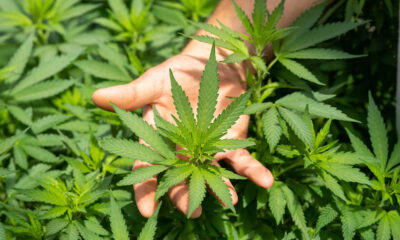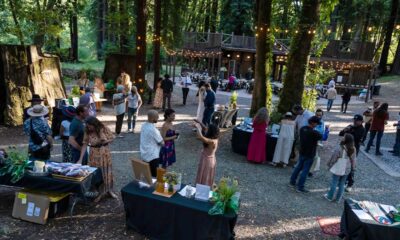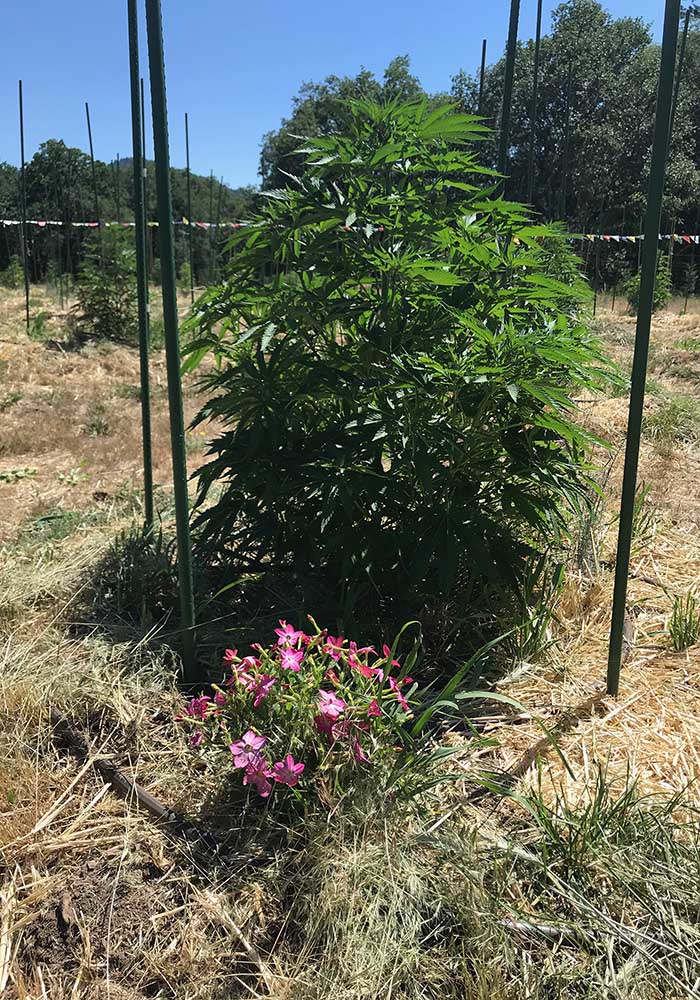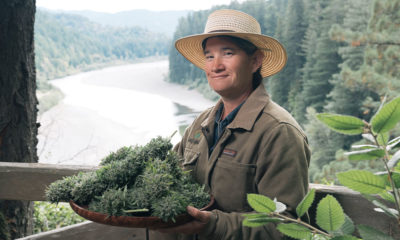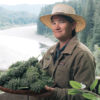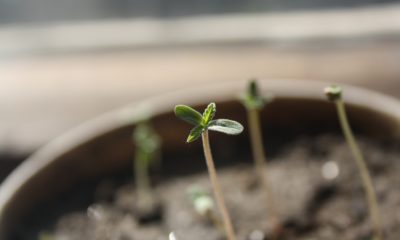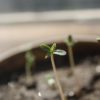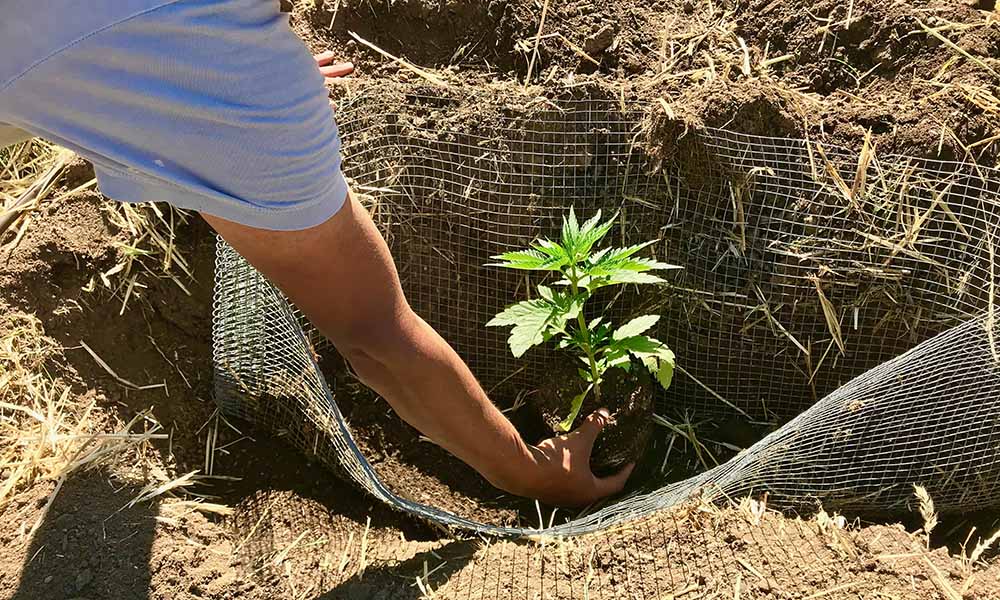
Cultivation
Cannabis Planting: Summer in the Mendocino Highlands
Swami Select co-founder offers a summer update from the garden, including details on preparing for transplanting day and monitoring plants for distress.
Late June and July have been sizzling in dry heat up here in the mountains of the Emerald Triangle, home of Swami Select cannabis. Although we still had some frosty mornings in late May (cold enough to lose some tomato plants), luckily the young cannabis plants here at Ganja Ma Gardens survived. There were even two days of unexpected and blessed rainfall in early June.
But now, in this heat, somehow the cannabis girls are loving it – as long as they get adequate water and nutrients from drip lines, compost teas and foliar sprays. At the present moment, the plants are looking good – a nice color green, with sturdy stalks and bushy branches. They are about as tall as they have ever been for this time of year, a testament to our springtime preparations. But no time to get cocky…We always think we’re gonna win the World Series when we start the season. It’s a long haul from sprouting to smoking.
Transplanting Prep & Gender Testing
May and June were busy with the many remaining tasks to get the garden ready for the immanent surge of transplanting. The compost tea soil drench continued, and the final amendments were added: a mix of homemade compost, worm castings and the neighbor’s alpaca manure. The new holes for the “hugellettes” (individual small mounds of living soil for each plant) we added to the garden this year were filled with short logs and sprinkled with gypsum powder, which helps loosen the clay in the soil. They were topped up into little mounds with a mixture of wood chips, leaves, manure, alfalfa meal, worm castings and our own soil mix.
Every year we do things a little differently, learning from the crises and problems of the previous year, refining our technique and responding to the challenges of climate change. This year, the biggest difference is that we had Leafworks test all of our seedling starts for their gender. They have a special way of analyzing the DNA code to look for the three genetic markers that determine maleness.
For several days in mid-May, we tested the samples. The crew mobilized around the process, which was precise and painstaking. We all wore sterile gloves and had to sterilize the scissors in alcohol after each leaf was clipped (the lab needs just the tip of a leaf after the plant has three tiers above the rounded cotyledon leaves). Next, we labeled each plant to coincide with the test tube that held its sample leaf tip. It takes a lot of concentration to keep track of everything.
We received the first batch of results about a week later, when we could tuck the first plants into their hugellette beds on May 28, which was a full three weeks earlier than the first planting in previous years. This means the plants were in their final spot in the ground for a longer period of time. And with the days getting longer and longer leading up to the Summer Solstice, the yield will hopefully increase.
Transplanting Day
Transplanting Day is a rush – almost a sacrament. It’s a bit like the day the seeds are started, and a bit like the first morning of harvest. Considering the blazing hot sun, we decided to start the transplanting in the early evening so the delicate girls wouldn’t get sunburned. Later in June, we actually put shade cloth over the fresh transplants.
In the process, the female starts were taken out of their one-gallon pots and placed in their mound beds, protected deep in the soil by a hardware cloth basket around the roots. Since they were transplanted so much earlier, there weren’t any root bound plants, which can be a problem if you have to wait until late June or even July for the girls to show their sex in their original pots. Once tucked in with a little water and a dash of mycorhyzol, each mound had a drip tube secured in a spiral around the plant, and the bed was covered with wheat straw mulch.
Once all the girls were in their beds, each plant had its blue Metrc tag (California Track and trace system) attached to its trunk. A feeding regimen consisting of a soil drench of compost tea and foliar feeding was set up. Then, the strongest males chosen for breeding were transplanted to larger pots and moved to isolation, far away behind the barn. The remaining males were put down, and we saved their soil for next year’s starts.
For the next big task, we dipped the trellis system’s bamboo and metal poles in hydrogen peroxide to kill any mold and set them out in the sun’s rays for purification. Each mound was then fixed with a square of four vertical poles about four feet apart, ready for the attachment of the horizontal bamboo sticks with zip ties. We start with just one tier of horizontals, about two feet off the ground. As the plants shoot higher, we continue to add more tiers at two-foot intervals.
Fire Season Ready
One of the biggest jobs was getting the farm ready for fire season. Because we live in the Mendocino Highlands, at the edge of an old growth Douglas Fir Forest, this meant trimming off all the low hanging branches on the trees near the buildings – barn, sheds, cabins and the house. In regenerative fashion, we sent the trimmed-off branches through a woodchipper and set them aside for next year’s garden – yet another way cannabis farming can sequester carbon.
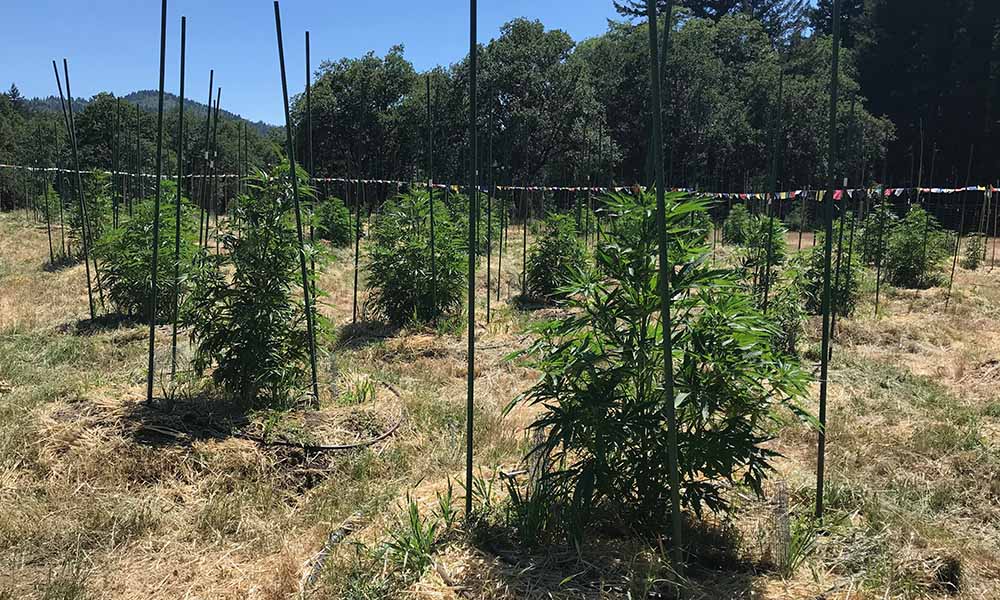
In addition, the gutters and roofs were cleaned of debris and the ground around the buildings was raked clear. We also cleaned up the fallen trees that had blown down in the gusty winter winds along the entrance road.
Finally, in compliance with Cal Fire directives, we added street address numbers at each turn off along our long private road. We also have a fire hydrant and a small trailer set up with a 200-gallon water tank and a transfer pump with a 50-foot hose as a first response unit. May we never have to use it. But we can’t forget last year’s fires, which were just fifteen miles to the southeast and fifteen miles to the northeast of us. Fortunately, they did not damage the cannabis crop, although the grey skies may have stunted the yield a little. We p that California is spared the all-threatening fires this year.
Come mid-July, we fed each plant about one half gallon of bokashi to stimulate microbial growth in the beds. The fermented grains consisted of wheat bran with EM-1 and molasses that we had started in late June. We also started a new compost pile using the wood chips from the fire preparation cleanup as a base, to which we add organic vegetable kitchen scraps and oak leaves, and then water and inoculate with compost tea.
Monitoring the Garden
Now, as the dog days of summer kick in, we maintain vigilance for pests and pathogens, and monitor the plants for any signs of distress. We will also keep checking each girl to confirm that she is still a female, because under stress, they can sometimes change their sex to male.
In the meantime, we continue to focus on all the painstaking details of obtaining the permits we need for our CEQA (California Environment Quality Act) clearance so that we can continue cultivating the magic cannabis plant to supply our dear customers. It’s all a labor of love and our passion.





